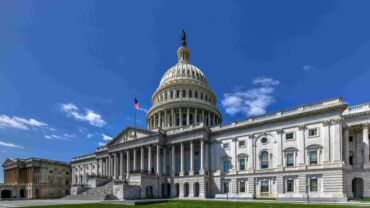IRS Webpage: COVID-19-Related Tax Credits for Required Paid Leave Provided by Small and Midsize Businesses FAQs
The IRS has posted FAQ guidance regarding the refundable payroll tax credits available to small and midsize employers that provide paid sick and family leave as required by the Families First Coronavirus Response Act (FFCRA)—see our Checkpoint article. The 66 FAQs, which are preceded by a detailed overview of the FFCRA’s tax credit provisions, provide further information about the requirements, limitations, and application of the credits. Eight FAQs address topics of particular interest to employer plan sponsors—here are highlights:
-
Qualified Health Plan Expenses (Q/A-9). The tax credits available to an employer are increased by “qualified health plan expenses”—the amount the employer spends to maintain group health plan coverage for employees on FFCRA-required paid sick or family leave.
-
Amount of Expenses Included (Q/As-31 and -32). The amount of qualified health plan expenses used to determine the credits generally includes the portion of the cost paid by the employer, as well as the portion paid by the employee with pre-tax contributions. Amounts paid by employees with after-tax contributions are not included. Employers sponsoring more than one plan (e.g., a group health plan and a health FSA or plans covering different employees) should determine expenses separately for each plan and allocate them among the employees who participate in that plan. For employees who participate in more than one plan, allocated expenses of each plan are aggregated for that employee.
-
Application to Insured Plans (Q/A-33). Employers sponsoring insured group health plans may use any reasonable method to determine and allocate plan expenses, including (1) the COBRA applicable premium for the employee, (2) one average premium rate for all employees, or (3) a substantially similar method that takes into account the average premium rate determined separately for employees with self-only and other than self-only coverage. Q/A-33 includes instructions and an example showing how to calculate the allocation based on an average premium rate for all employees.
-
Application to Self-Insured Plans (Q/A-34). Employers sponsoring self-insured group health plans may use any reasonable method of determining and allocating expenses, including (1) the COBRA applicable premium for the employee, or (2) any reasonable actuarial method to determine the estimated annual expenses of the plan. For employers using an actuarial method, Q/A-34 provides allocation instructions similar to those for insured plans.
-
Application to HSA (and Archer MSA) Contributions (Q/A-35). Employer contributions to HSAs (or Archer MSAs) are not qualified health plan expenses. Employers that sponsor a high deductible health plan should calculate the amount of qualified expenses in the same manner as any insured or self-insured health plan.
-
Application to HRA, Health FSA, and QSEHRA Contributions (Q/A-36). HRA (including individual coverage HRA (ICHRA)) contributions and health FSA contributions are included in qualified health plan expenses; contributions to a QSEHRA are not. To allocate contributions to an HRA or health FSA, employers should use the amount of contributions made on behalf of the particular employee.
-
Salary Reduction Contributions (Q/A-54). The FFCRA does not address (and thus does not prohibit) taking salary reduction contributions for any plan from qualified sick or family leave wages when an employee has a salary reduction agreement in place with an employer.
EBIA Comment: The FAQs address many other topics related to the FFCRA paid leave tax credits, including (among others) determining the amount of the credit, procedures for claiming the credit, substantiation requirements, the time period for which credits are available, and taxation and deductibility of the credit. The IRS notes that these FAQs (like those of other agencies) will be updated and expanded as necessary. For more information, see our upcoming updates to EBIA’s Group Health Plan Mandates, Consumer-Driven Health Care, Cafeteria Plans, and 401(k) Plans manuals.
Contributing Editors: EBIA Staff.








